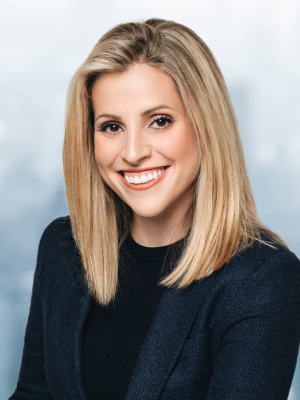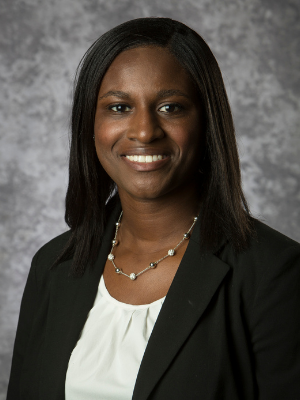 Reentering the workforce after a career break can be both exhilarating and challenging. Whether the time away was for caregiving, further education, or personal reasons, it is natural to feel uncertain about how to confidently and meaningfully reenter the workforce. However, with thoughtful preparation and planning, it’s possible to navigate this transition successfully while leveraging the unique strengths developed during your break. Here are five comprehensive strategies to guide you:
Reentering the workforce after a career break can be both exhilarating and challenging. Whether the time away was for caregiving, further education, or personal reasons, it is natural to feel uncertain about how to confidently and meaningfully reenter the workforce. However, with thoughtful preparation and planning, it’s possible to navigate this transition successfully while leveraging the unique strengths developed during your break. Here are five comprehensive strategies to guide you:
1. Reflect on Your Values
Before diving back into the job market, take a moment to reflect on your values. Having time away from the day-to-day tasks of the work week can provide perspective on what truly matters to you, and aligning your next role with your values can lead to greater satisfaction and fulfillment. You may have a clear idea of what your values are, or you may need to ask yourself some reflective questions to get to the heart of what you hold most dear. Some ideas include:
- What motivates you?
- What’s something you couldn’t imagine your life without?
- What excites and energizes you?
- Recall a time when you felt completely immersed and alive — what made it stand out? Why was it so impactful?
Once you are clear about what is most important to you, consider creating a values-based checklist to guide your job search. For instance, if flexibility is important to balance family responsibilities, prioritize companies with remote or hybrid work options. If meaningful work is a priority, explore organizations whose missions align with your passions. Defining these criteria early can help you focus your search and identify roles that resonate with you. This intentional approach ensures that your next career move is not just a return to work but a step toward a more fulfilling professional journey.
2. Own Your Career Narrative
Reframing your career break as a period of growth is a vital step. Reflect on the transferable skills you have gained while away from the traditional work force. Managing a household, volunteering, or pursuing personal projects often involves problem-solving, time management, and leadership. In fact, recent research from Harvard Business Review points to how care work can build invaluable skills like empathy, efficiency, and tenacity that benefit employers.
Develop a concise and compelling story that connects these experiences to the position you are seeking. For example, organizing a community event or fundraiser highlights project management, teamwork, and the ability to meet deadlines under pressure. Similarly, mediating family conflicts or managing caregiving responsibilities showcases emotional intelligence, problem-solving, and adaptability — critical skills that are highly valued in professional environments. Practice articulating this narrative, emphasizing how your time away prepared you to tackle new challenges with resilience and perspective. This approach demonstrates self-awareness and positions you as a candidate with a well-rounded skill set.
3. Update Your Skills and Knowledge
Staying current in your field is essential, particularly in fast-changing industries. A 2023 LinkedIn report highlights that professionals who proactively invest in their skills are better positioned to seize new opportunities. Furthermore, if reflecting on your values leads you to consider a career pivot, focusing on areas where you can build knowledge becomes especially important. Begin by conducting a skills audit or a personal SWOT analysis (Strengths, Weaknesses, Opportunities, Threats) to pinpoint your strengths and identify areas where further knowledge or development could enhance your career prospects.
Whether re-entering your current field or trying something new, think about enrolling in online courses through platforms like Coursera, Udemy, or LinkedIn Learning, which offer flexible, self-paced courses. If you are aiming for formal credentials, consider certification programs offered by universities or professional organizations. Additionally, stay informed by subscribing to industry publications, attending webinars, or participating in workshops.
4. Rebuild and Leverage Your Network
Networking remains one of the most effective strategies for finding new opportunities. Although a good first step is to reconnect with former colleagues, mentors, and peers, research shows it is important to broaden and diversify your digital social network beyond the circle of those you know well to the more infrequent, arm’s-length relationships with acquaintances. These “moderately weak” ties can be more beneficial than you think when looking to leverage your network.
Start by updating your LinkedIn profile to reflect your current career goals and highlight any new skills or experiences gained during your break. Decide if you want to use the “Career Break” feature on LinkedIn that allows you to articulate those periods when you were away from the paid workforce. Reach out to contacts individually, expressing your interest in returning to work and asking for guidance. Attend professional events, conferences, or local meetups to expand your network further.
If networking feels daunting, consider working with a career coach to develop effective strategies and build confidence. Additionally, joining industry-specific online groups or forums can help you engage in discussions, share insights, and establish your professional presence. Networking isn’t just about job leads; it’s about cultivating meaningful relationships that support your long-term growth.
5. Work with a Career Coach
Navigating a return to the workforce can feel overwhelming, but setting realistic, actionable goals can make the process more manageable. Define what success looks like for you in both the short and long term, whether it’s securing a full-time role, gaining experience through a returnship, or pivoting into a new industry.
A career coach can help you think about the smaller, achievable steps it will take to reach the broader goal of transitioning back into the paid workforce. They provide a safe space to explore what is most meaningful to you in this transition while offering the accountability and focus necessary to keep the momentum moving forward. Beyond practical guidance, a coach can help you build confidence and navigate challenges, making the transition smoother and more rewarding.
Remember, this process is not just about finding a job — it’s about finding the right job that aligns with your skills, values, and aspirations. Setting clear goals and seeking professional support can help you create a purposeful and fulfilling career path.
If you are looking for expert support in navigating this transition, Book Here for an exploratory call to work with one of our leadership coaches.
Redefine Your Career, Your Way
Returning to the workforce after a break isn’t just about picking up where you left off—it’s an opportunity to redefine your career in ways that align with your current goals and values. By reflecting on your priorities, owning your narrative, investing in skill development, leveraging your network, and working with a career coach, you can turn this transition into a fulfilling and transformative experience. Every career break holds the potential for a remarkable comeback. With determination and a clear strategy, this chapter can mark the start of a fulfilling and purpose-driven career.
By Jessica Robaire





 By Nicki Gilmour
By Nicki Gilmour
